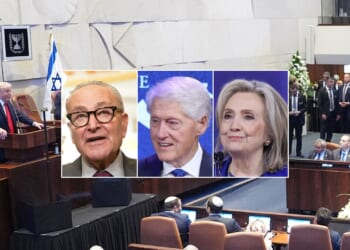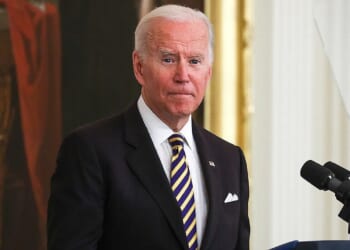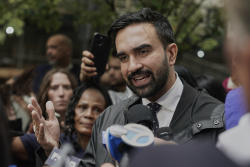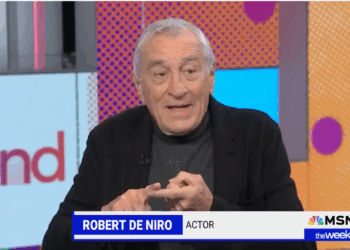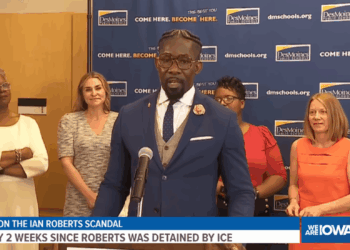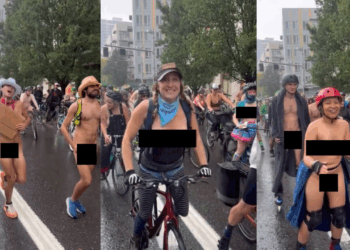
New York City’s Latino voters are no longer the sleeping giant in local politics. After a record-breaking and decisive turnout in this year’s primary elections, they will help determine who runs City Hall beginning on January 1, 2026.
Latino voters’ growing clout reflects decades of demographic change. The Bronx is New York’s first Latino-majority borough. And significant Latino communities span Washington Heights and East Harlem in Manhattan, Bushwick and Sunset Park in Brooklyn, and Corona and Jackson Heights in Queens.
Finally, a reason to check your email.
Sign up for our free newsletter today.
An estimated 1.7 million out of about 3.2 million Latino New York City residents are eligible to vote. Moreover, 165,000 Latinos voted in the June 2025 mayoral primaries, surpassing previous voting marks.
Democratic Socialist nominee Zohran Mamdani’s clear edge in the general election owes in part to his substantial advantage among Latinos. Since incumbent mayor Eric Adams exited the race, 48 percent of Latino registered voters say that they would vote for Mamdani, compared with 24 percent for Andrew Cuomo and 14 percent for Republican Curtis Sliwa.
Hispanic support for Mamdani isn’t just large—it’s ardent. More than 90 percent of Mamdani’s supporters say they’re enthusiastic about voting for him, significantly higher than the enthusiasm levels of Cuomo’s voters.
Why are Latinos rallying behind Mamdani? It comes down to trust and bread-and-butter issues. When asked whom they trust most to stand up for immigrants, 53 percent of Latino voters chose Mamdani, while only 13 percent picked Cuomo and 9 percent Sliwa.
Latino New Yorkers list cost of living, public safety, and housing affordability as their top concerns this election—and Mamdani has campaigned on them all. A whopping 90 percent of Latinos, for example, favor “building more affordable housing throughout the city,” while 62 percent believe the city is moving in the wrong direction, citing cost of living, crime, and housing costs as the biggest problems. Latino families have the highest poverty rate of any demographic (about one in four adults), so a message of lowering rents, transit fares, and utility bills resonates with these voters.
It helps, of course, that Mamdani is a Democrat in a heavily Democratic city—but even within the party, his coalition stands out. In the mayoral primary, he not only swept young progressive voters but also performed better with black, Latino, and Asian voters than many expected. In fact, 49 percent of Hispanic voters and 41 percent of black voters back Mamdani—roughly the same level of support he enjoys among white liberals.
To be sure, the Latino vote is far from monolithic. The June 2025 Democratic primary revealed sharp differences in Latino voting patterns across the city. In Brooklyn and Queens, Latinos leaned slightly to Mamdani, who carried the borough by 1,664 votes. In Upper Manhattan—in neighborhoods like Washington Heights, Inwood, and East Harlem, with their large Dominican and Puerto Rican populations—Mamdani outperformed expectations, securing a 2,000-vote edge over Cuomo. But in the Bronx, Cuomo came out on top in most Latino enclaves, winning 51 percent of the vote in Latino areas of the South borough.
One potential sticking point for Mamdani is the subtle ideological divide over foreign policy and socialism that has emerged in this race. Some Latino New Yorkers—particularly those with roots in countries scarred by authoritarian socialist regimes—are skeptical of anything labeled “socialist.”
For Cuomo and Sliwa, there’s still time to shore up that Hispanic vote. Seventy percent of Latino poll respondents said they support expanding NYPD funding and hiring more cops—policies the Mamdani campaign has not backed. Similarly, 90 percent of Latinos want to make it easier to start and own small businesses, which Mamdani’s commitment to greater taxes, spending, and regulation could make more challenging.
Still, Cuomo appears to be in murky waters with Hispanic voters. A month before the election, 46 percent had an unfavorable opinion of him, versus only 27 percent holding unfavorable views for Mamdani. Meantime, Sliwa’s role among Hispanic voters may be that of a spoiler: by drawing a chunk of anti-Mamdani votes on the right, he may prevent those votes from going to Cuomo.
Both Cuomo and Sliwa must perform a balancing act: they have to convince Latino New Yorkers that improving safety and quality of life doesn’t just mean more cops but also better housing, jobs, and services. And they need to persuade Latinos that socialism is not the answer to the city’s many problems.
Photo by Selcuk Acar/Anadolu via Getty Images
City Journal is a publication of the Manhattan Institute for Policy Research (MI), a leading free-market think tank. Are you interested in supporting the magazine? As a 501(c)(3) nonprofit, donations in support of MI and City Journal are fully tax-deductible as provided by law (EIN #13-2912529).
Source link


